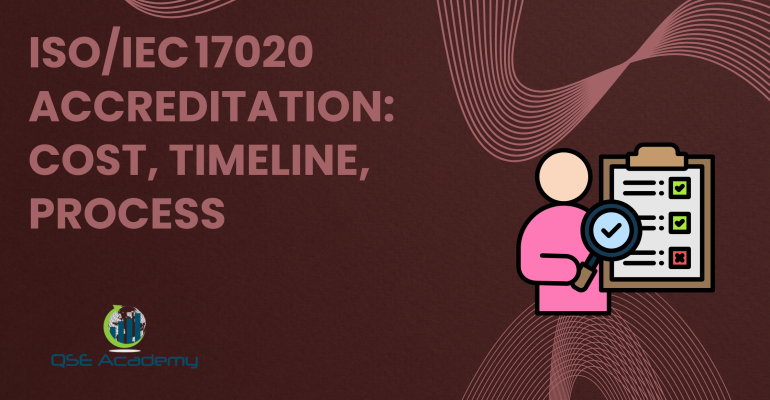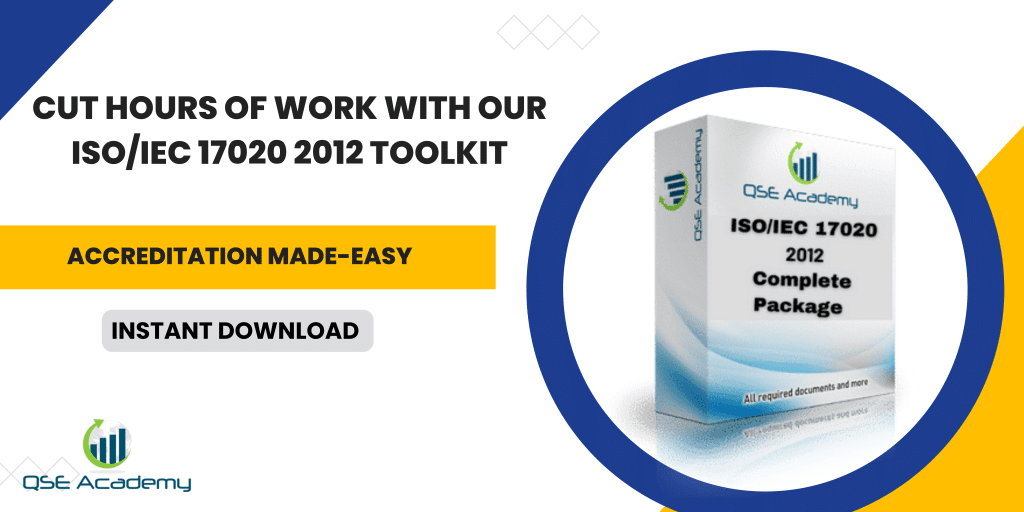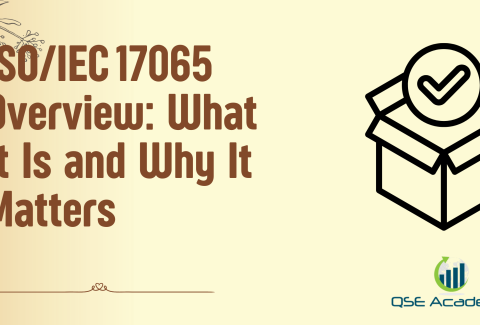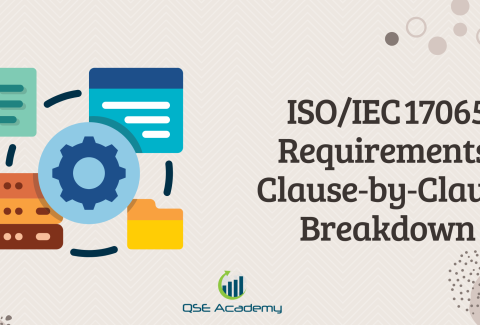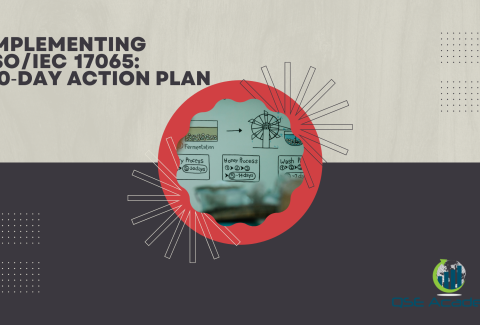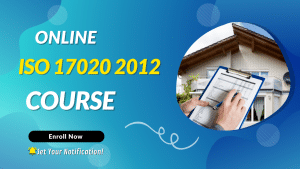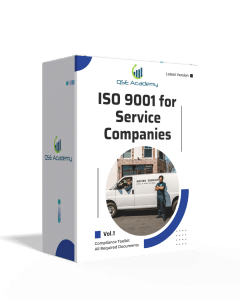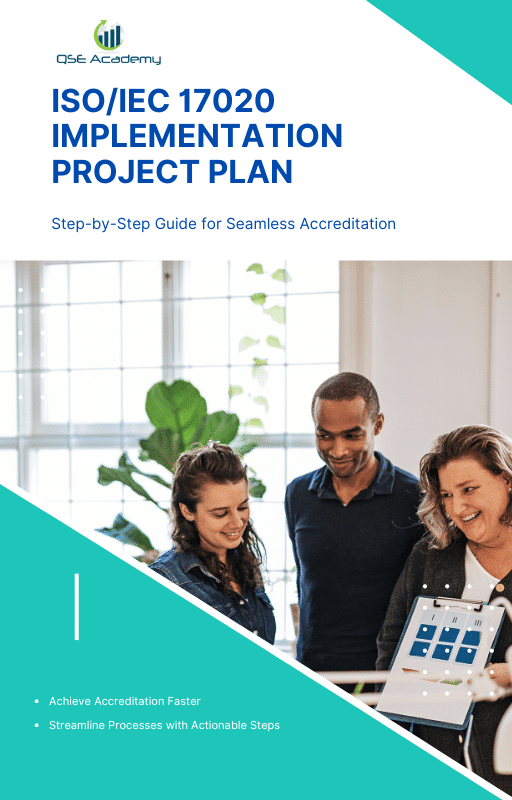ISO/IEC 17020 Accreditation: Cost, Timeline, Process
Last Updated on October 22, 2025 by Hafsa J.
Understanding ISO/IEC 17020 Accreditation: Cost, Timeline, and Process
For many inspection bodies, ISO/IEC 17020 accreditation is both a milestone and a commitment. It’s the formal recognition that your organization operates with competence, consistency, and impartiality—but achieving it takes careful planning, budgeting, and time management.
This guide is designed as a pillar resource for anyone serious about earning and maintaining ISO/IEC 17020 accreditation. Whether you’re preparing for your first application or optimizing your next accreditation cycle, you’ll find here a clear, structured view of what to expect—how much it costs, how long it takes, and exactly what steps you’ll go through along the way.
Over the years, I’ve seen inspection bodies underestimate one or more of these three elements. Some planned well technically but overlooked hidden costs. Others set aggressive timelines without realizing that assessor availability or corrective-action rounds could extend the process. The organizations that succeed are those that understand the complete accreditation landscape—financially, operationally, and strategically—before they begin.
In this article, you’ll learn how to:
-
Navigate the ISO/IEC 17020 accreditation process from application to final decision.
-
Understand the full cost structure—from application fees to ongoing surveillance expenses.
-
Plan a realistic accreditation timeline, with clear expectations for each stage.
-
Choose the right accreditation body to match your scope, recognition needs, and budget.
-
Maintain compliance effectively through surveillance assessments and system improvements.
By the end, you’ll have a complete framework to plan your accreditation journey with confidence—knowing the exact steps, timeframes, and investments required to achieve and sustain ISO/IEC 17020 accreditation.
ISO/IEC 17020 Accreditation Process Overview
Before calculating costs or planning timelines, it’s essential to understand the ISO/IEC 17020 accreditation process itself—the sequence of steps every inspection body must complete to demonstrate technical competence and impartiality. Accreditation isn’t just a checklist; it’s a structured evaluation designed to confirm that your organization consistently delivers valid, reliable inspection results.
Every accreditation body (AB) follows the same foundational framework defined in ISO/IEC 17011, though exact procedures and documentation requirements may vary slightly. Understanding this sequence early helps you plan resources, schedule internal milestones, and anticipate where most of your time and budget will go.
Table 1 – ISO/IEC 17020 Accreditation Process Overview
| Stage | Description | Primary Outputs |
|---|---|---|
| 1. Application Submission | You formally apply to your chosen accreditation body, providing basic information on your organization, scope of inspection activities, and quality management system. | Application form, scope statement, and initial fee payment |
| 2. Document Review | The AB reviews your management system documentation (quality manual, procedures, and records) to confirm readiness for on-site assessment. | Document review report and feedback |
| 3. Pre-Assessment (Optional) | A preliminary, advisory visit that identifies gaps before the full assessment. Not mandatory, but highly recommended for first-time applicants. | Gap analysis and improvement plan |
| 4. On-Site Assessment | The core evaluation: assessors visit your premises, interview personnel, review inspection records, and witness actual inspection activities. | Draft assessment report and list of nonconformities |
| 5. Corrective Action Phase | You address all nonconformities or observations identified during the audit and submit corrective-action evidence for review. | Corrective-action plan and closure evidence |
| 6. Technical Review and Accreditation Decision | The AB’s independent committee reviews the audit results and your corrective actions before making the final accreditation decision. | Accreditation certificate and published scope |
| 7. Ongoing Surveillance and Reassessment | After initial approval, annual surveillance audits verify continued compliance, with full reassessment typically every five years. | Surveillance and reassessment reports |
What to Expect During Each Phase
-
The application and document review phase is primarily administrative but critical—it sets the tone for your entire journey.
-
The on-site assessment is where assessors evaluate not only your documentation but also your culture of impartiality and technical competence.
-
The corrective-action phase is often where timelines expand. Fast, well-documented responses help accelerate approval.
-
Once accredited, your organization enters the maintenance cycle—periodic surveillance to ensure your system remains effective and aligned with ISO/IEC 17020.
Pro Tip:
Prepare your documentation as if the assessors were seeing your system for the first time. Clear, traceable records not only speed up document review but also minimize questions during the on-site visit.
Common Pitfall:
Submitting an incomplete or inconsistent scope of accreditation. The scope defines what you’ll be accredited for—errors here can delay approval and even affect future expansion opportunities.
ISO/IEC 17020 Accreditation Cost Breakdown
Understanding the cost of ISO/IEC 17020 accreditation is critical before you start. Accreditation isn’t a one-time payment—it’s an ongoing investment that covers multiple stages: application, assessment, corrective actions, and yearly surveillance. While costs vary by accreditation body, scope, and region, the structure is relatively consistent across the industry.
The key is to see costs not as isolated expenses but as part of a lifecycle. Every stage of accreditation—initial evaluation, maintenance, reassessment—has its own financial component. Knowing these up front helps you build a realistic budget and avoid unpleasant surprises later.
Table 2 – Typical ISO/IEC 17020 Accreditation Cost Components
| Cost Category | Description | When It Applies | Typical Range (USD) |
|---|---|---|---|
| Application Fee | Charged when you submit your application and documentation to the accreditation body. Covers administrative review. | One-time (initial only) | $500 – $1,500 |
| Document Review Fee | For evaluation of your management system documentation before the site visit. | Initial accreditation | $1,000 – $2,000 |
| Assessment Man-Day Fee | Main audit cost, based on assessor day rates multiplied by the number of assessment days. | Initial, surveillance, reassessment | $1,200 – $1,800 per day |
| Assessor Travel & Accommodation | Additional expense for travel, especially for on-site assessments. | Each on-site audit | Variable (depends on location) |
| Technical Expert Fee (if applicable) | Charged when specialized assessors are needed for specific inspection scopes. | As required | $500 – $1,500 per day |
| Accreditation Decision Fee | Covers the review and approval by the accreditation committee. | Initial and reassessment | $400 – $800 |
| Surveillance Assessment Fee | Annual fee for ongoing surveillance audits to maintain accreditation. | Yearly | $2,000 – $5,000 |
| Reassessment Fee | Charged for full system review every 5 years. | Every 5 years | Similar to initial cost |
Factors That Influence Total Cost
-
Scope of Inspection Activities: The more inspection categories you cover, the more assessors (and days) are required.
-
Size and Complexity: Multi-site organizations incur higher costs due to additional travel and time.
-
Accreditation Body Pricing Model: Some ABs offer package pricing, others charge per man-day plus travel.
-
Preparation Quality: Well-prepared organizations often save on reassessment costs by avoiding repeat audits.
Pro Tip:
Request a detailed fee schedule from your accreditation body before applying. Ask specifically about travel reimbursements, additional day charges, and policies for rescheduling assessments—these often become hidden costs.
Common Pitfall:
Focusing solely on the initial cost. Many organizations budget for the application and first assessment but forget to include surveillance fees, which are recurring and essential for maintaining accreditation.
ISO/IEC 17020 Accreditation Timeline and Duration
Once you’ve planned your budget, the next question is: how long does ISO/IEC 17020 accreditation take? The timeline varies, but on average, most inspection bodies complete the entire process within 6 to 12 months. The duration depends on how quickly you prepare documentation, respond to findings, and coordinate with your chosen accreditation body.
While some organizations try to rush through the process, accreditation is inherently methodical—every stage builds on verified evidence of competence. Understanding each phase and its typical duration helps you create a realistic project plan and avoid unnecessary delays.
Table 3 – Typical ISO/IEC 17020 Accreditation Timeline
| Stage | Key Activities | Typical Duration | Main Dependencies |
|---|---|---|---|
| 1. Preparation & Documentation | Develop and implement your quality management system, inspection procedures, and records. | 2–4 months | Internal readiness and staff training |
| 2. Application Submission & Review | Submit your application, scope statement, and documentation to the accreditation body (AB). | 1–2 months | AB workload and completeness of submission |
| 3. Pre-Assessment (Optional) | Trial audit to identify weaknesses before the full assessment. | 3–6 weeks | Scheduling and availability of assessors |
| 4. On-Site Assessment | Main audit covering system, staff, and inspection witnessing. | 1–2 weeks | Audit scope and team size |
| 5. Corrective Action & Review | Address nonconformities, submit evidence, and await AB review. | 1–3 months | Timeliness and quality of responses |
| 6. Accreditation Decision | Independent technical review and final approval by AB. | 2–4 weeks | AB decision committee schedule |
| Total Estimated Duration | 6–12 months depending on scope, complexity, and readiness. | — | — |
Key Factors That Affect the Timeline
-
Readiness of Documentation: The more complete your system documentation is before applying, the shorter the early stages will be.
-
Accreditation Body Schedule: ABs often plan assessments several weeks in advance, especially for specialized scopes.
-
Number of Nonconformities: Every finding adds time—both for you to correct and for the AB to verify.
-
Complexity of Inspection Activities: Multi-site or technical inspections (like NDT or environmental testing) often need additional assessor days.
-
Internal Responsiveness: Quick corrective-action closures can shave months off your timeline.
Pro Tip:
Start your internal readiness review at least three months before you plan to submit your application. This preemptive step helps you identify and fix potential gaps early, keeping your project on track.
Common Pitfall:
Overpromising on time. Setting an unrealistic target—like “we’ll be accredited in three months”—creates unnecessary stress and rushed documentation. Build buffer time into your plan; it’s better to finish early than to miss your target date because of predictable delays.
Choosing the Right ISO/IEC 17020 Accreditation Body
Selecting the right ISO/IEC 17020 accreditation body is one of the most strategic decisions you’ll make in the entire process. The accreditation body (AB) you choose will influence not only your costs and timeline, but also the credibility and international recognition of your certificate.
Every AB operates under the framework of ISO/IEC 17011, but their procedures, assessor expertise, and responsiveness can vary. Some focus on specific inspection sectors, while others handle broader scopes across industries. Taking the time to evaluate each option before applying can save you both money and months of frustration later.
Table 4 – Key Criteria for Selecting an ISO/IEC 17020 Accreditation Body
| Selection Factor | Why It Matters | What to Check |
|---|---|---|
| ILAC-MRA Signatory Status | Determines whether your accreditation will be recognized internationally. | Verify on ILAC.org under “Signatories” list. |
| Scope Coverage | Ensures the AB is qualified to assess your inspection category (e.g., lifting, construction, NDT). | Review AB’s official scope of recognition. |
| Assessor Technical Expertise | Impacts quality and practicality of assessments. | Request profiles or CVs of assigned assessors. |
| Cost Transparency | Prevents budget surprises from hidden fees. | Ask for a detailed cost schedule, including travel and extra days. |
| Scheduling Efficiency | Determines how quickly assessments can be planned and completed. | Ask about average lead time for on-site assessments. |
| Language and Location | Affects communication ease and travel costs. | Check available languages and local offices. |
| Client Reputation | Indicates professionalism, responsiveness, and audit quality. | Request references or check testimonials from accredited bodies. |
Local vs. International Accreditation Bodies
-
Local ABs are often more affordable and easier to coordinate with, ideal if your operations are national or regional.
-
International ABs (such as UKAS, ANAB, or IAS) are ILAC-MRA signatories and provide global recognition—essential if your clients operate across borders.
Pro Tip:
If you plan to expand internationally, select an ILAC-MRA signatory AB from the start. Reapplying for international recognition later often costs more than choosing a globally recognized AB upfront.
Common Pitfall:
Choosing based solely on price. A lower-cost AB may seem appealing but can cause delays or credibility issues if its recognition isn’t accepted in your target markets.
Maintaining ISO/IEC 17020 Accreditation – Surveillance and Reassessment
Achieving accreditation is only the beginning; maintaining it is where your system’s true maturity shows. ISO/IEC 17020 accreditation remains valid only if your inspection body consistently demonstrates continued compliance and improvement. Accreditation bodies verify this through surveillance assessments (usually every year) and reassessments (typically every five years).
These periodic evaluations confirm that your management system, inspection methods, and impartiality controls haven’t degraded over time. Think of them as checkpoints that keep your accreditation credible and your operations aligned with ISO/IEC 17020 requirements.
Table 5 – ISO/IEC 17020 Accreditation Maintenance Schedule
| Type of Assessment | Frequency | Purpose | Typical Duration |
|---|---|---|---|
| Surveillance Audit | Annually (Year 1–4) | Verify that your system remains effective and all key processes continue to meet ISO/IEC 17020. | 1–2 days |
| Reassessment (Renewal Audit) | Every 5 years | Full review to renew accreditation and reassess system performance. | 2–4 days |
| Extra or Special Audit | As needed | Triggered by scope changes, complaints, or major organizational changes. | Varies |
What Surveillance Audits Include
During a surveillance assessment, the accreditation body reviews:
-
Implementation of your quality management system.
-
Updates to inspection methods, personnel, and scope.
-
Results of internal audits and management reviews.
-
Complaints and impartiality risk management.
-
Corrective actions from the previous audit cycle.
Surveillance visits are lighter than initial assessments but still formal. They’re often focused on risk areas, trend analysis, and evidence of continual improvement.
Reassessment Audits, on the other hand, are comprehensive—similar to your first accreditation. The AB evaluates the entire system to confirm that your competence and impartiality remain intact for another five years.
Pro Tip:
Maintain audit readiness all year. Keep records updated monthly, review impartiality risks quarterly, and treat internal audits as your rehearsal for the next external one. Organizations that do this often sail through surveillance without any major findings.
Common Pitfall:
Treating surveillance audits as “routine.” A lapse in attention—like outdated training records or expired equipment calibrations—can lead to nonconformities that jeopardize your accreditation status.
ISO/IEC 17020 Accreditation Cost-Saving and Time-Saving Tips
Accreditation doesn’t have to be expensive or drawn out. Many inspection bodies overspend or face avoidable delays simply because they don’t plan strategically. The truth is, you can achieve full ISO/IEC 17020 accreditation efficiently—without compromising quality—if you know where time and money are most often lost.
Here’s how to keep your project lean, predictable, and smooth from start to finish.
Table 6 – Smart Savings vs. False Savings in ISO/IEC 17020 Accreditation
| Action | Smart Saving (Do This) | False Saving (Avoid This) |
|---|---|---|
| Documentation Development | Invest in building complete, compliant procedures early—it saves costly revisions later. | Reusing unrelated ISO 9001 or 17025 templates without adaptation. |
| Internal Audits | Conduct a full internal audit before applying. It identifies weaknesses early. | Skipping internal audits to “save time.” You’ll face more findings during the real audit. |
| Scope Definition | Start with a focused, realistic scope and expand later. | Applying for an overly broad scope you can’t demonstrate yet. |
| Pre-Assessment | Use pre-assessments as a low-risk rehearsal; it prevents major nonconformities later. | Declining pre-assessment to save money—only to pay for extra assessor days later. |
| Training and Awareness | Provide targeted ISO 17020 training to staff before the audit. | Assuming everyone “already knows” the system, leading to poor interviews. |
| Corrective Actions | Respond quickly and completely—close findings on first submission. | Submitting partial evidence and extending the AB’s review cycle. |
| Assessor Communication | Clarify scope, expectations, and logistics early with your AB. | Waiting until the week of assessment to discuss critical details. |
Additional Cost-Saving Tips:
-
Bundle Your Sites – If you operate multiple locations, plan for multi-site assessments under one accreditation. It’s more efficient than separate accreditations.
-
Maintain Digital Records – Well-organized electronic documentation reduces assessor time during reviews.
-
Stay Audit-Ready Year-Round – Regular updates and internal checks help you avoid corrective-action extensions (which often mean extra review fees).
-
Choose an AB That Matches Your Scale – A smaller national AB may cost less and schedule faster if international recognition isn’t required.
-
Plan Early for Surveillance – Annual fees are predictable. Setting aside a fixed yearly budget prevents last-minute cash flow issues.
Pro Tip:
Use your first accreditation as a baseline—track your assessor day counts, total costs, and review durations. This data makes future renewals more predictable and easier to budget.
Common Pitfall:
Trying to cut costs by minimizing staff involvement. Accreditation is a team effort—when everyone understands the system, efficiency and audit performance improve naturally.
FAQs – ISO/IEC 17020 Accreditation: Cost, Timeline, and Process
Q1: How much does ISO/IEC 17020 accreditation typically cost?
The total cost depends on the scope, number of inspection sites, and accreditation body chosen. For most small to mid-sized inspection bodies, the initial accreditation cost ranges from USD 6,000 to 15,000, including application, document review, and assessment fees. Expect annual surveillance fees afterward, generally between USD 2,000 and 5,000. Always request a detailed quote from your chosen accreditation body for accuracy.
Q2: How long does it take to achieve ISO/IEC 17020 accreditation?
A realistic timeframe is 6 to 12 months from application to certification. The main variable is your internal readiness. If documentation and records are complete and you respond quickly to corrective actions, you’ll likely finish on the shorter end of that range. Complex scopes or delays in assessor scheduling can extend it.
Q3: What’s the difference between an ISO/IEC 17020 audit and certification audit (like ISO 9001)?
ISO/IEC 17020 accreditation focuses on technical competence and impartiality in inspection activities, not just system management. It verifies that your inspection outcomes are valid and that staff are qualified to perform them. ISO 9001 certification, on the other hand, focuses more on quality management and process consistency, not technical validity.
Q4: Do I need an international accreditation body?
If your clients, regulators, or partners operate internationally, yes—choose an ILAC-MRA signatory accreditation body. It ensures global recognition of your inspection results. For local operations, a national accreditation body recognized by regulators may suffice.
Q5: What happens after getting accredited?
You’ll enter a maintenance cycle, which includes annual surveillance audits and a full reassessment every five years. Accreditation remains valid as long as you maintain compliance and close any findings promptly during these periodic audits.
Planning Your ISO/IEC 17020 Accreditation Journey
Earning ISO/IEC 17020 accreditation isn’t just a compliance exercise—it’s a strategic investment in your inspection body’s credibility, efficiency, and long-term trustworthiness.
Understanding the cost, timeline, and process gives you the power to plan proactively. You know what resources to allocate, what milestones to set, and how to sustain accreditation year after year without surprises.
Here’s the key takeaway:
-
Budget realistically. Include both initial and recurring costs.
-
Plan your timeline. Build buffer time for corrective actions and assessor scheduling.
-
Engage the right accreditation body. Recognition and responsiveness matter as much as price.
-
Maintain readiness year-round. Continuous improvement makes surveillance and reassessment effortless.
With preparation, discipline, and the right guidance, your inspection body can achieve ISO/IEC 17020 accreditation efficiently—and maintain it confidently.
To streamline your planning, use the ISO/IEC 17020 Accreditation Planner Toolkit, which includes a customizable cost estimator, process timeline chart, and annual maintenance checklist to help you manage every stage with clarity and control.
I hold a Master’s degree in Quality Management, and I’ve built my career specializing in the ISO/IEC 17000 series standards, including ISO/IEC 17025, ISO 15189, ISO/IEC 17020, and ISO/IEC 17065. My background includes hands-on experience in accreditation preparation, documentation development, and internal auditing for laboratories and certification bodies. I’ve worked closely with teams in testing, calibration, inspection, and medical laboratories, helping them achieve and maintain compliance with international accreditation requirements. I’ve also received professional training in internal audits for ISO/IEC 17025 and ISO 15189, with practical involvement in managing nonconformities, improving quality systems, and aligning operations with standard requirements. At QSE Academy, I contribute technical content that turns complex accreditation standards into practical, step-by-step guidance for labs and assessors around the world. I’m passionate about supporting quality-driven organizations and making the path to accreditation clear, structured, and achievable.

